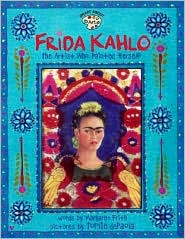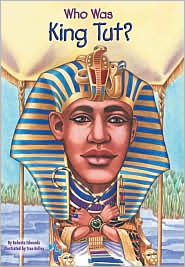by Mary Starrs Armstrong, University of Alaska, Anchorage, AK
 Reading biographies, studying the genre while having access to a variety of titles about the same person offers choice as well as opportunities for depth and exploration. Consider Elisabeta, a Mexican American fifth grader who did not see herself as a reader, who expresses surprise at the extent she got hooked on reading about the life and work of Mexican artist Frida Kahlo:
Reading biographies, studying the genre while having access to a variety of titles about the same person offers choice as well as opportunities for depth and exploration. Consider Elisabeta, a Mexican American fifth grader who did not see herself as a reader, who expresses surprise at the extent she got hooked on reading about the life and work of Mexican artist Frida Kahlo:
I really don’t like [books], but if it’s something really good, if it’s about a person and I’ll want to keep wanting to learn about that person and what else they would do … when we read the biographies, I like had to read them. I picked up a couple of them and like … Frida was one of the ones. At first I read the picture book and it was pretty good, and I found another one of her and I picked it up and read it and kept reading more and more and getting hooked and I didn’t realize it … all of a sudden I was fighting people just to get the Frida books. [I was getting very interested] very. Because I don’t like reading … like her books, I just loved reading them. She would like … she went through so much stuff and life, she still kept going on and going on …Yeah! I got hooked on Frida.
Further, offering biographies of people about whom the readers have never heard fuels curiosity and hopefully, further inquiry. After reading biographies of Elvis and Amelia Earhart, Marianne, a Caucasian third grader found a biography of King Tut (Edwards 2006). She told me:
I thought King Tut was going to be a snorer. A real snorer … But then I tried it out and when I heard about Tut’s life. It was actually really interesting. Back then they had what we don’t have. A lot of stuff, like they praised cats … and they had different ways of taking care of their dead.
Marianne went on to talk about biography itself.
Biography is different. You actually believe you are in there again. When I was reading about King Tut, I was actually believing I was there -– in Egypt — like I was an Egyptian princess … You’re reading about someone who has died, but you’re alive with them.
 What do your students think about reading biographies? Do the dead come alive?
What do your students think about reading biographies? Do the dead come alive?
How does access to a variety of titles affect your teaching as well as the children’s learning about individuals?
What biographies do you read?
References
Edwards, R. (2006). Who was King Tut? New York: Grosset & Dunlap
Frith, M. (2003). Frida Kahlo the artist who painted herself. New York: Grosset & Dunlap
Journey through Worlds of Words during our open reading hours: Monday-Friday, 9 a.m. to 5 p.m. and Saturday, 9 a.m. to 1 p.m. To view our complete offerings of WOW Currents, please visit archival stream.
- Themes: Mary Starrs Armstrong
- Descriptors: Books & Resources, Student Connections, WOW Currents
